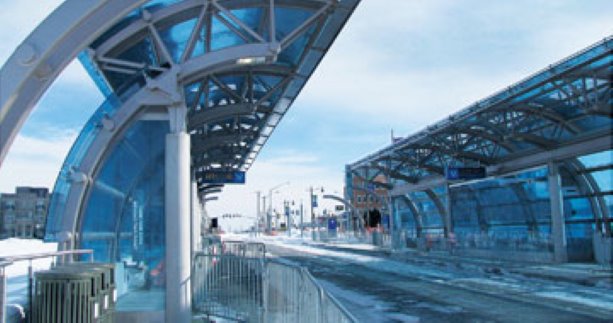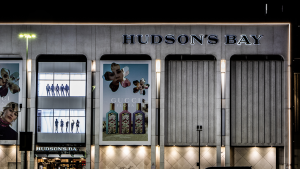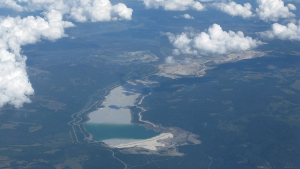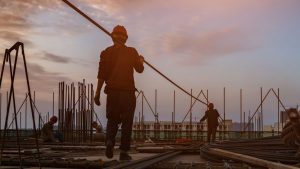A $235-million reconstruction of Highway 7 north of Toronto will include landscape improvements and bus lanes for York Region Transit’s VIVA public transit service. Brennan Paving Ltd. is the general contractor and Ferguson Neudorf Glass Inc. will build canopies at bus stops.
A $235-million reconstruction of Highway 7 in York Region from Yonge Street to Warden Avenue that gets underway this spring won’t be a standard road project.
It includes the construction of two dedicated bus lanes and 11 futuristic-style bus stations to facilitate the movement of York Region’s VIVA rapid transit buses. Each station will consist of two platforms to serve both westbound and eastbound buses.
The lanes will be built in the centre of the highway, which will be expanded, although no vehicle lanes will be added. Brennan Paving Ltd. is the general contractor, while the glass and steel canopies will be erected by Ferguson Neudorf Glass Inc.
Apart from the actual construction, the project will transform that stretch of highway into a more visually appealing and pedestrian-friendly environment, according to the York Region Transit Corporation and the private design-builder which is overseeing the VIVA infrastructure improvements throughout the region.
“We will be planting 35,000 bushes and probably about 1,500 trees,” says Graham Carey, project director with York Consortium 2002, in outlining some of the urban landscape improvements that will be made along the expanded right-of-way.
Construction will take until early 2014 to complete, but he doesn’t think the project will be marred by the controversy and complaints that dogged the building of the dedicated St. Clair Avenue streetcar line in Toronto.
“Residents know there will be traffic delays” says Carey, citing ongoing public relations initiatives by the York Region Rapid Transit Corporation which will include timely construction progress reports and news releases and a web page.
For its part, the consortium will ensure two traffic lanes in each direction will remain open at all times, he says.
A major feature of the reconstructed highway will be the bus stations. Designed by Aecom, the Delcan Corp., and the IBI Group — the consortium’s design partners — the 55-metre-long stations will be highlighted by distinctive-looking 27-metre-long glass canopy roofs which will extend over the buses to keep snow and rain off passengers while they’re getting on and off.
Other features of the full wind enclosures include temperature and motion-activated heaters, arrival and departure screens that provide real-time scheduling information, and tactile pavers to enhance safety, says Carey.
As part of a long-range planning scenario, the stations have also been designed to service light rail vehicles should the VIVA bus system be converted into to such system in the future. “The stations are 55 metres long because that is the length of two LRT vehicles.”
The protype for the stations was built last fall by and is now being used for driver training and other operational tests. Known as the Enterprise segment because of its location at the intersection of Enterprise Boulevard and Warden Avenue, it is the first of 71 such stations that will eventually be built throughout the region, says corporation chief engineer Paul May.











Recent Comments
comments for this post are closed